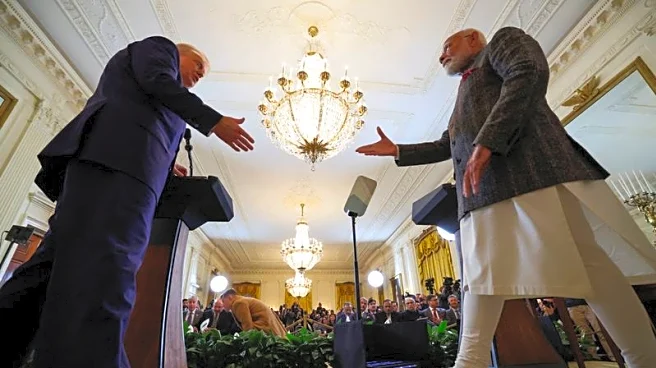What is the story about?
What's Happening?
Pilgrimage tourism has emerged as a significant driver of travel demand in India, according to data from MakeMyTrip. The online travel company reported a 19% increase in accommodation bookings across 56 pilgrimage destinations during the 2025 financial year. Notable growth was observed in cities like Prayagraj, Varanasi, Ayodhya, Puri, Amritsar, and Tirupati, with newer destinations such as Khatushyam Ji, Omkareshwar, and Thiruchendur gaining traction. Rajesh Magow, co-founder and group CEO of MakeMyTrip, highlighted the consistent growth fueled by stronger connectivity and diverse demographics planning pilgrimage-led trips.
Why It's Important?
The rise in pilgrimage tourism is reshaping India's hospitality sector, driving demand for accommodations and new hotel developments. This trend reflects a broader shift towards spiritual travel, which is becoming increasingly popular across various age groups and income segments. The growth in this sector could lead to increased investments in infrastructure and services catering to religious tourists, potentially boosting local economies and creating job opportunities. It also underscores the importance of cultural and religious tourism as a sustainable economic driver.
What's Next?
As pilgrimage tourism continues to grow, stakeholders in India's hospitality industry may focus on expanding infrastructure and services to accommodate the increasing number of travelers. This could involve developing new hotels and improving transportation links to pilgrimage sites. Additionally, there may be efforts to promote lesser-known destinations to diversify travel options and reduce pressure on popular sites. The industry might also explore partnerships with religious organizations to enhance the travel experience for pilgrims.
Beyond the Headlines
The growth in pilgrimage tourism highlights the cultural significance of religious travel in India, offering insights into how spirituality influences travel behavior. It also raises questions about the environmental impact of increased tourism and the need for sustainable practices to preserve sacred sites. Furthermore, the trend may encourage other countries to explore similar opportunities in cultural tourism, leveraging their unique heritage to attract international visitors.
AI Generated Content
Do you find this article useful?















